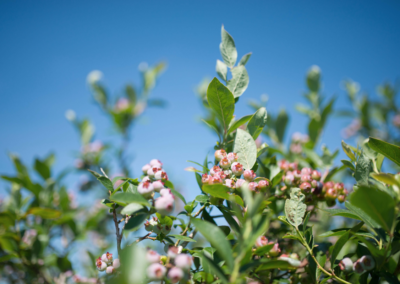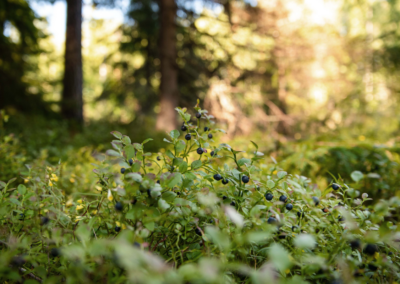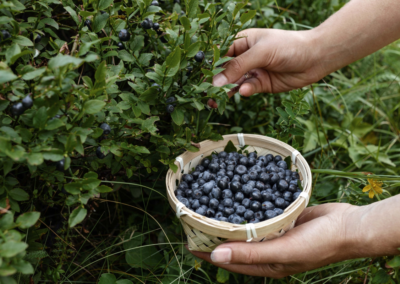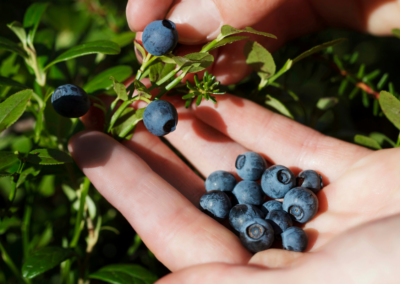
The wild blueberry
(Vaccinium myrtillus)
Blueberries have been part of our daily diet since time immemorial. We have known since Hildegard von Bingen (1098-1179) that the small dark fruits not only taste good, but also have a well-deserved place in scientific literature. Her writings influenced entire generations of doctors, naturalists and scholars.
And modern science today confirms that our ancestors were quite right. The small berries contain bioactive substances such as anthocyanins, flavonoids and antioxidants with great nutritional value for the human body.
The wild blueberry
Late summer berries with rich colors
Botanically speaking, blueberries belong to the heather family (Ericaceae). In fact, its bushes only grow to a height of around half a meter and are considered to be very robust, especially when it comes to frost.
The berries themselves have a diameter of 6 to 10 millimetres and are dark blue to purple in color. Like other dark berries, the wild blueberry ripens late. The fruits contain a whole summer’s worth of sunshine. This allows the valuable secondary plant substances in the fruit to develop optimally. The riper the fruit, the more relevant anthocyanins and antioxidants it contains.


Grown wild in the Carpathian foothills
Our wild blueberries
The wild blueberries that we use for rubyni® come exclusively from the high mountains of the Ukrainian Carpathians. In this environment, the berries find ideal conditions and have always thrived free from agricultural intervention.
The entire chain from delivery to the finished rubyni® wild blueberry capsule is in our family’s hands.
The history
Stone Age
Together with other berries and fruits, the wild blueberry was part of the Stone Age people's daily diet.
1st century AD.
The Roman scholar Pliny the Elder mentions bilberries in his writings. It is used as bait to catch birds and as a dye for clothing.
12th century
In her book "Physica", Abbess Hildegard von Bingen (1098-1179) explains how she uses bilberries to support various bodily functions.
From the 17th century
The cultivation of blueberries begins. New varieties with larger fruits are created.
1886
Sebastian Kneipp continues the line of botanists, naturopaths and doctors who have been studying blueberries for centuries.
Since 2010
The wild blueberry is experiencing a revival in connection with a healthy diet and is the subject of numerous scientific studies.



